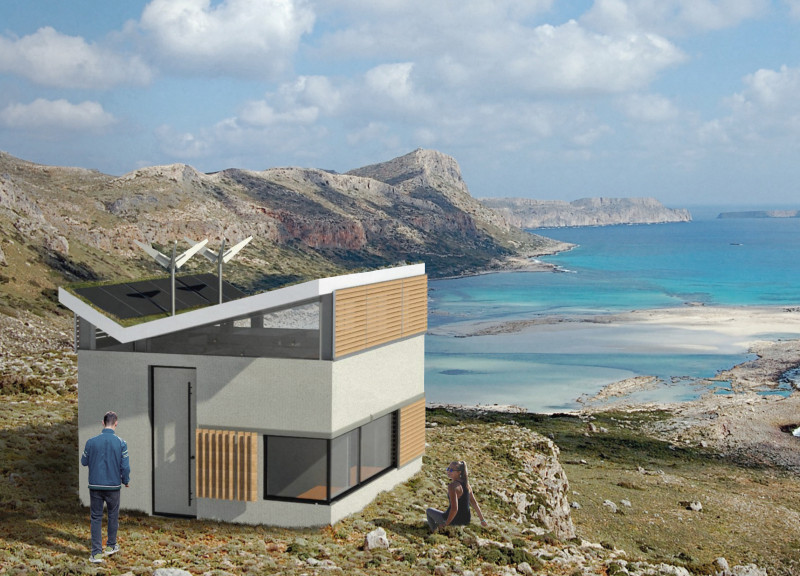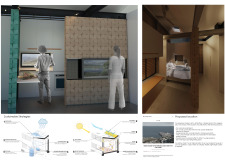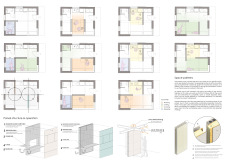5 key facts about this project
The design envisions a microhome for young professionals, located on the remote island of Antikythera in the Aegean Sea. The project aims to create a living space that is adaptable to the changing needs of its residents. With limited space available, the focus is on flexibility and multifunctionality, encouraging a rethinking of how people can interact with their environment.
Flexible Spatial Configuration
The microhome is organized on a single level to enhance accessibility and openness. By minimizing fixed walls, except for the bathroom, the layout allows for smooth movement and interaction within the home. Central to this design are two sliding panels that divide the space. These panels can be adjusted to offer privacy when needed, making it possible for residents to create distinct areas for different activities.
Multifunctional Elements
The sliding panels are designed to include essential features such as folding desks, seats, and a television. This integration of functions supports various activities such as work, relaxation, and socializing. The layout encourages residents to easily switch between tasks without feeling constrained. The design prioritizes a living space that is adaptable and comfortable.
Sustainability Strategies
Sustainability is a key consideration in this microhome. It incorporates rainwater collection systems along with greywater recycling to conserve water. The design also includes renewable energy solutions, like solar panels and wind turbines, to reduce reliance on conventional energy sources. These choices reflect a commitment to environmental responsibility while promoting self-sufficiency in a remote location.
Materials and Acoustic Comfort
The design features decorative acoustic cork panels that provide removable soundproofing to help maintain a quiet atmosphere. The inclusion of perforated panels allows for more configuration options, enhancing the home's adaptability. Thoughtful material selection is crucial in creating a functional living space that balances comfort and efficiency.
With its innovative use of movable panels and sustainable practices, the microhome illustrates a practical approach to modern living. The design emphasizes the importance of adaptability and resource management in creating a comfortable home environment for young residents. The result is a space that responds effectively to individual needs while promoting a sense of community and connection.






















































